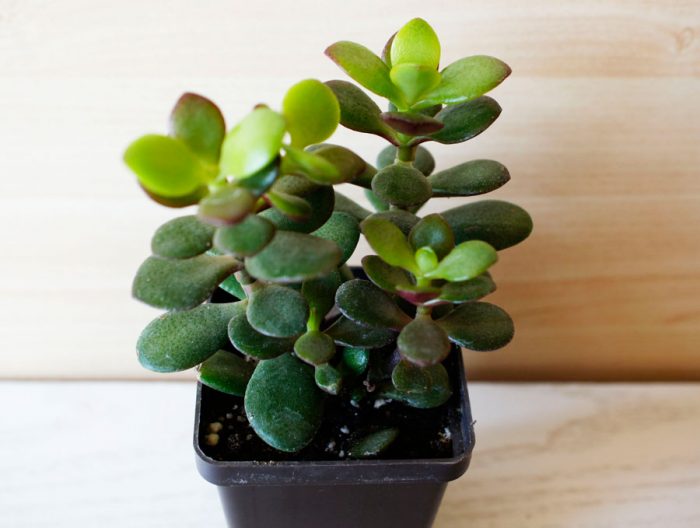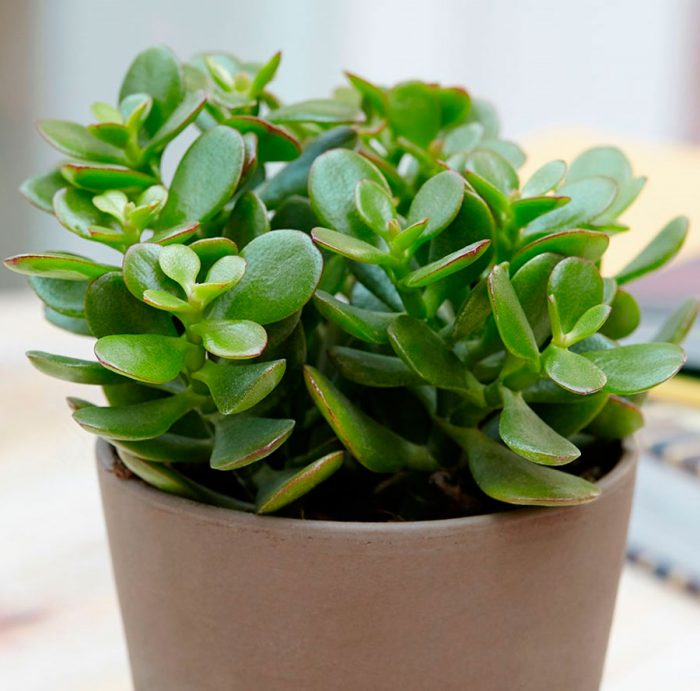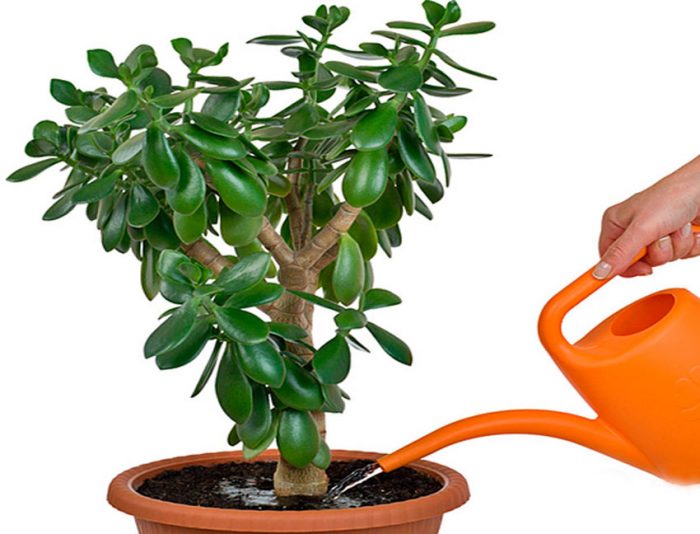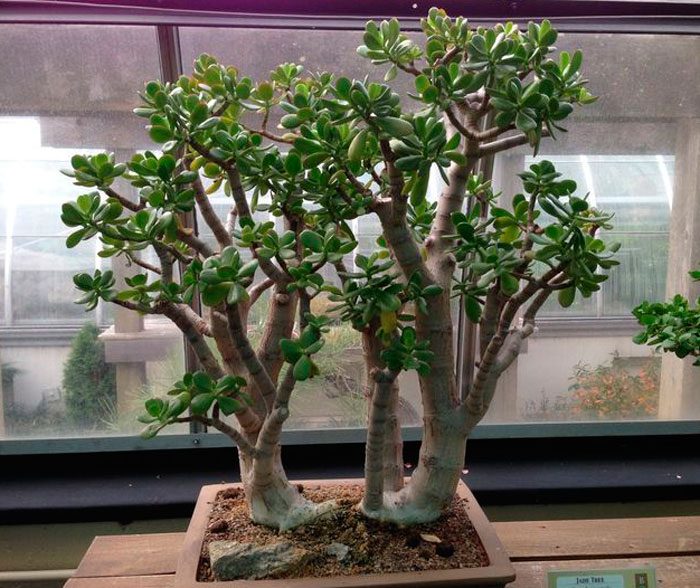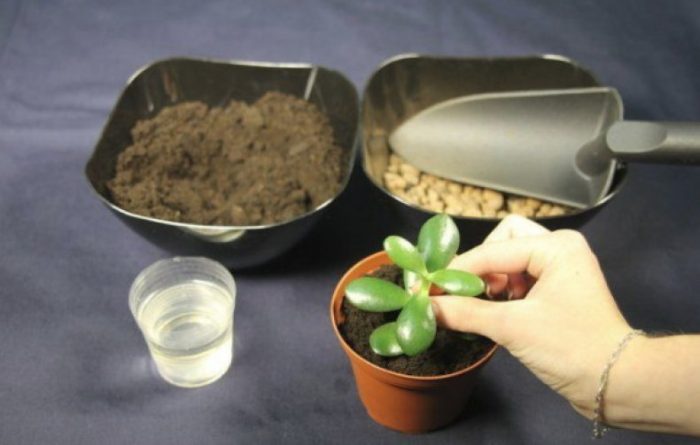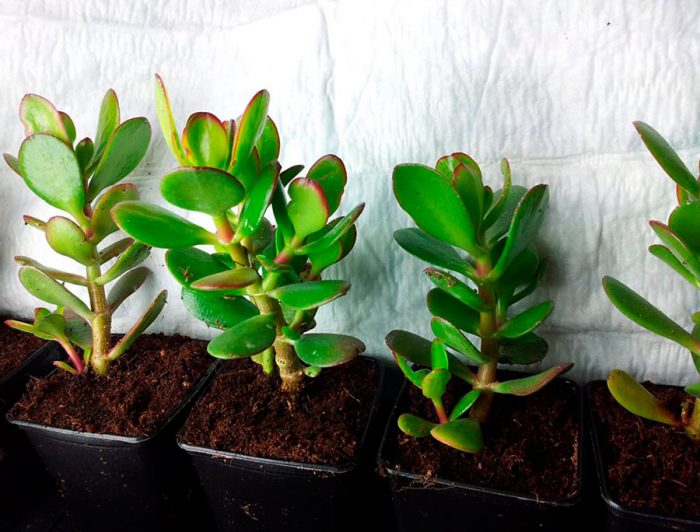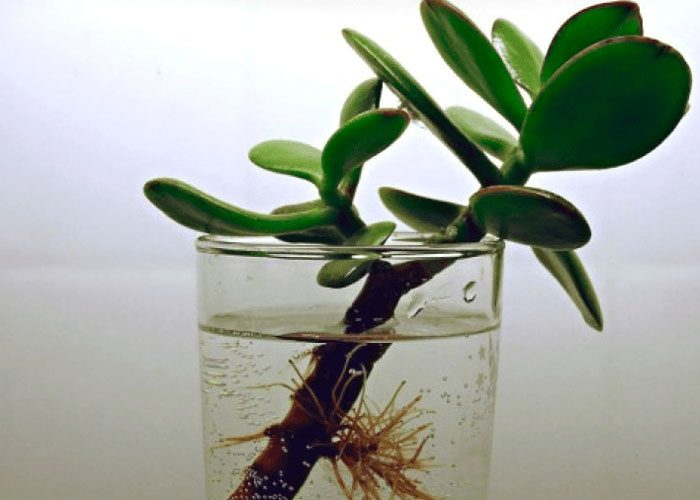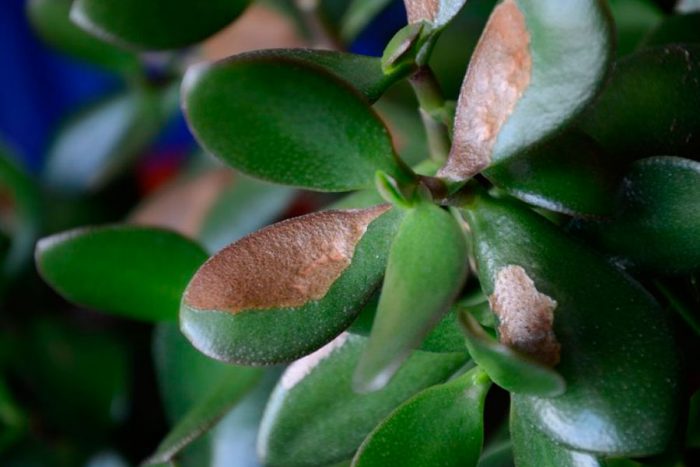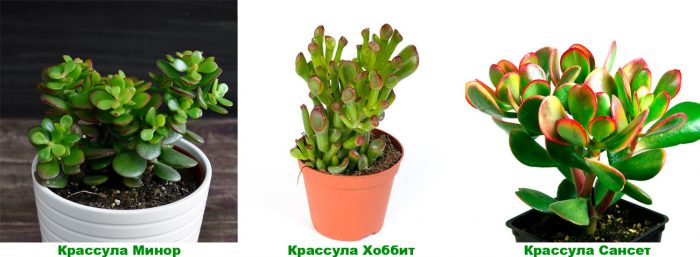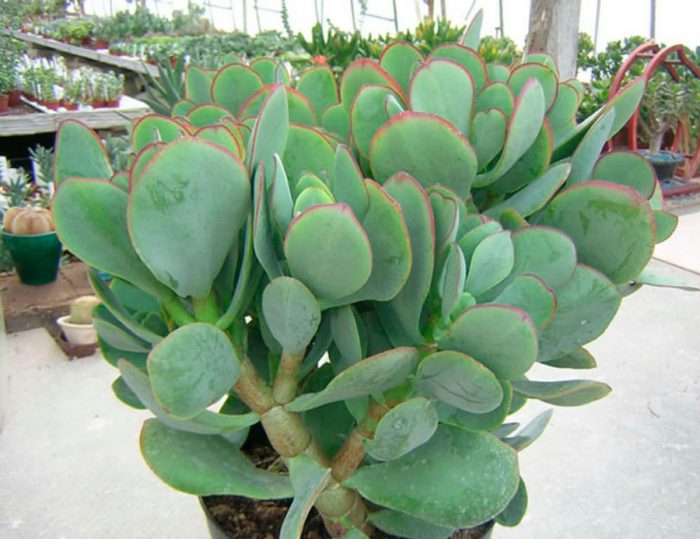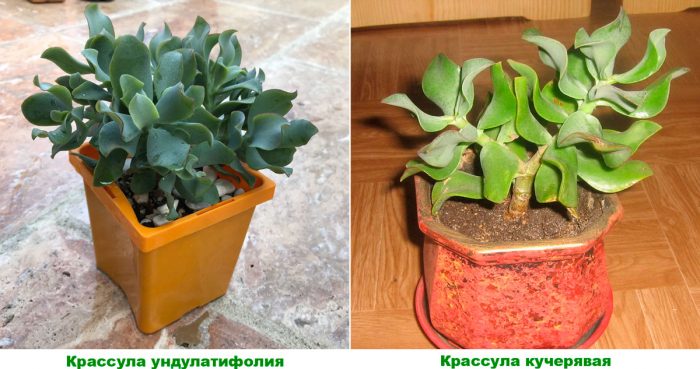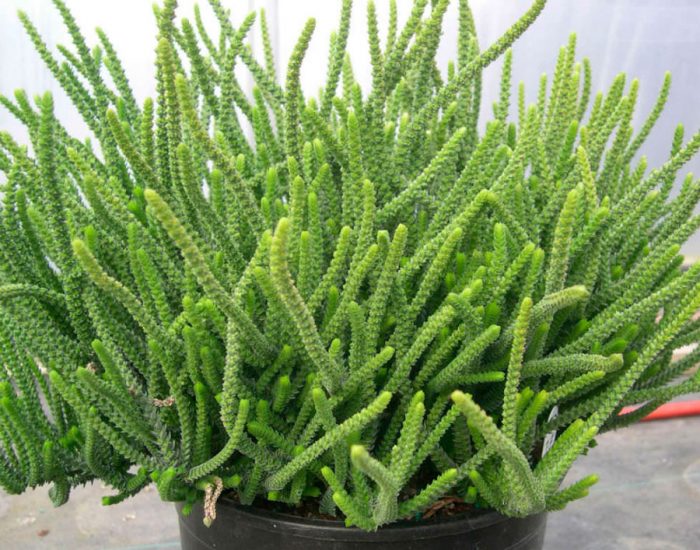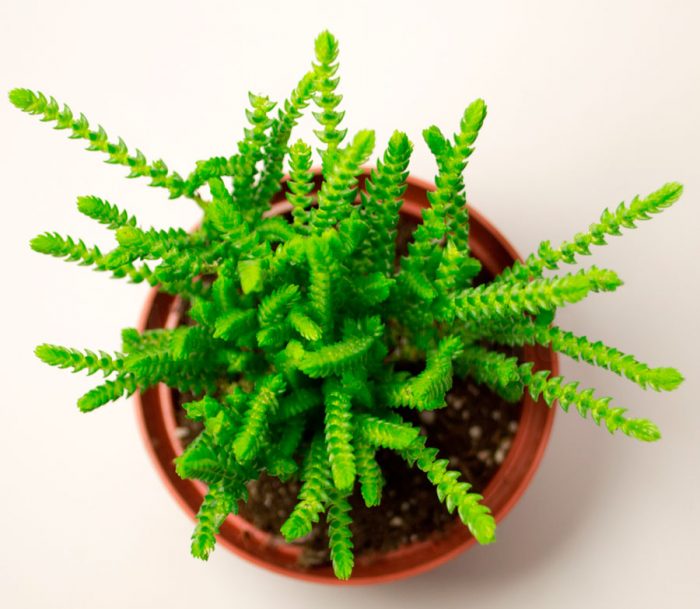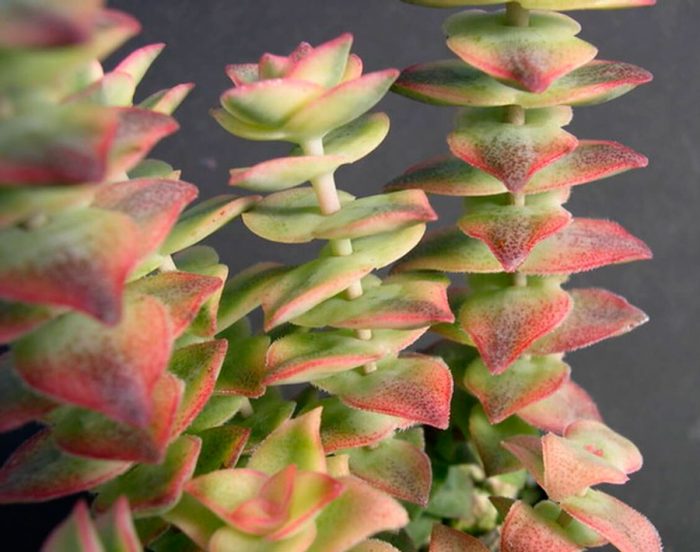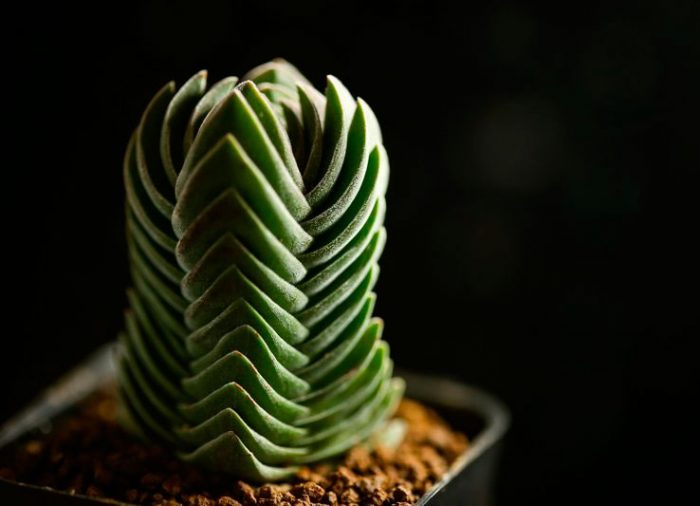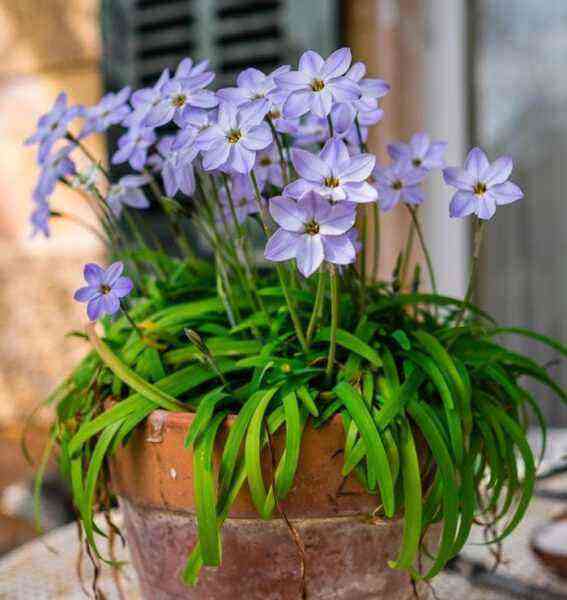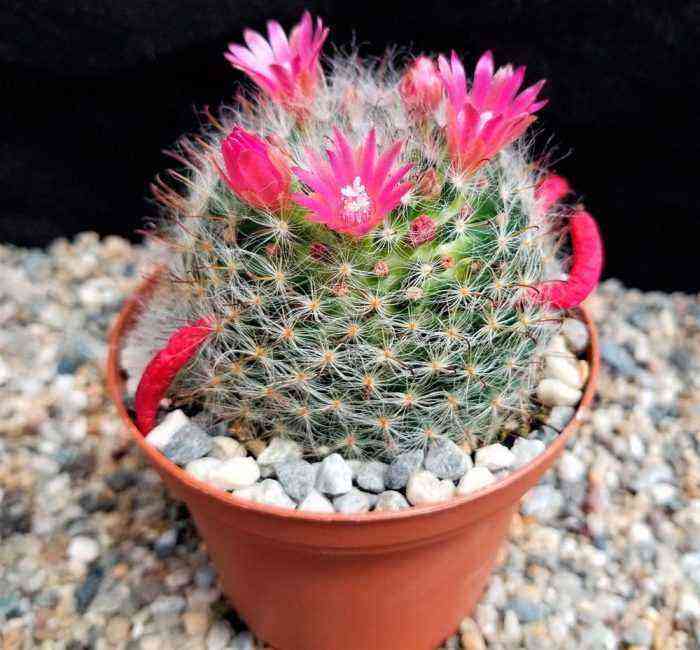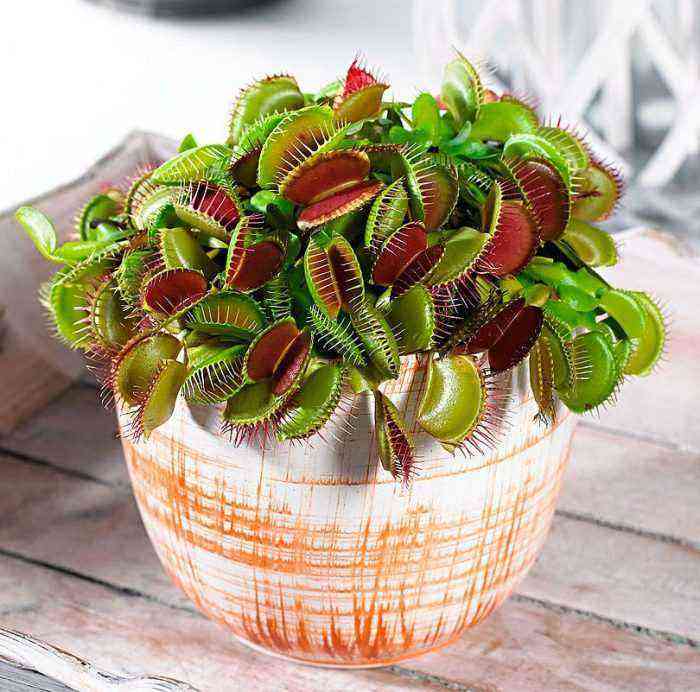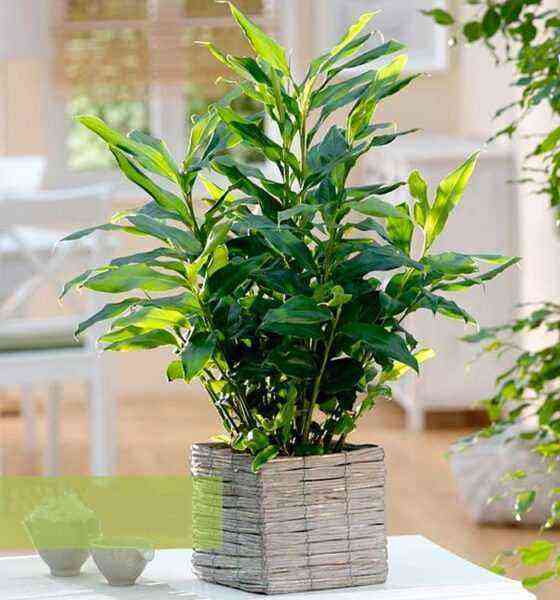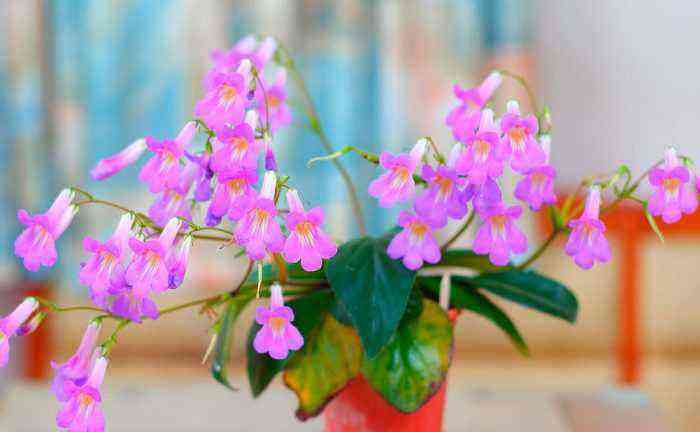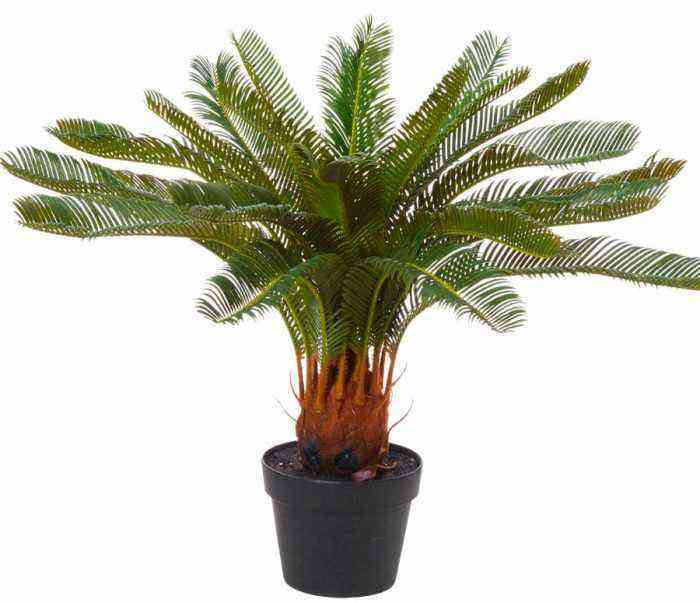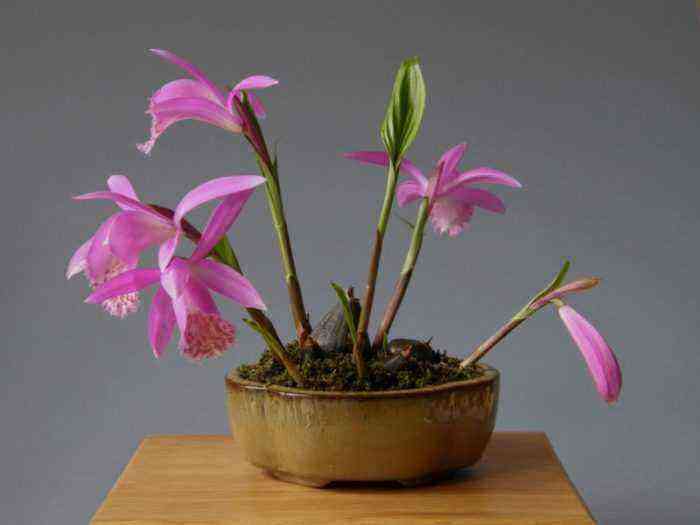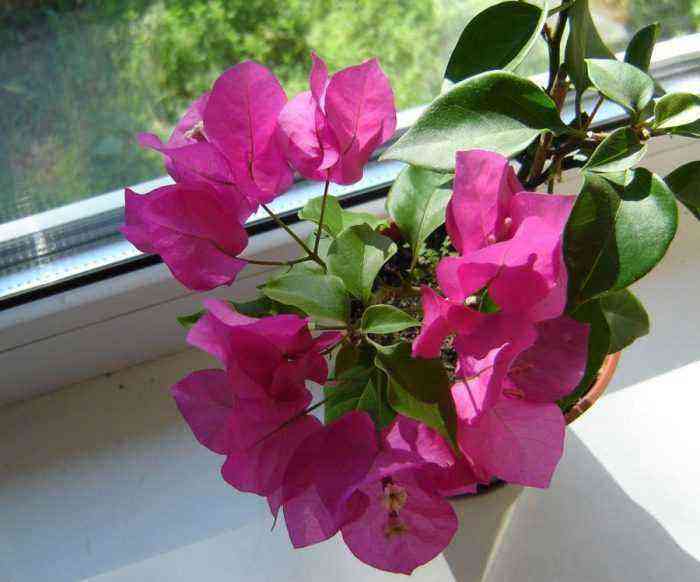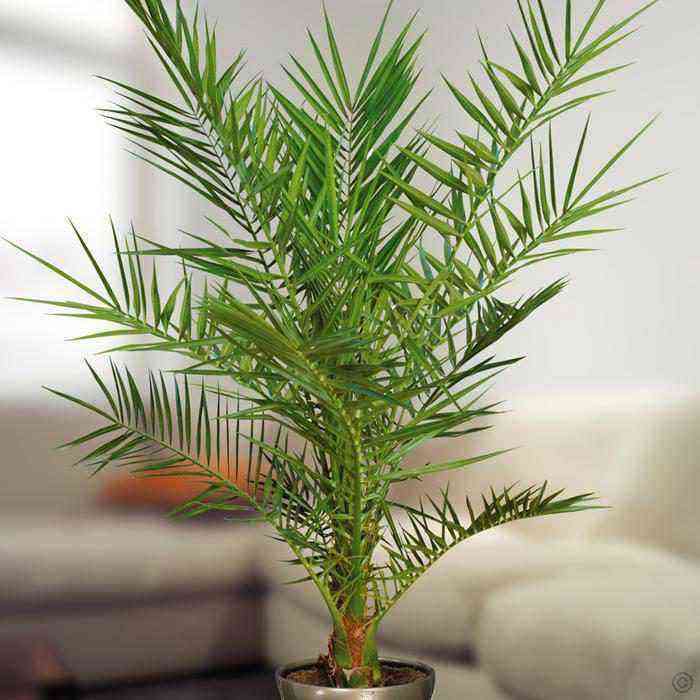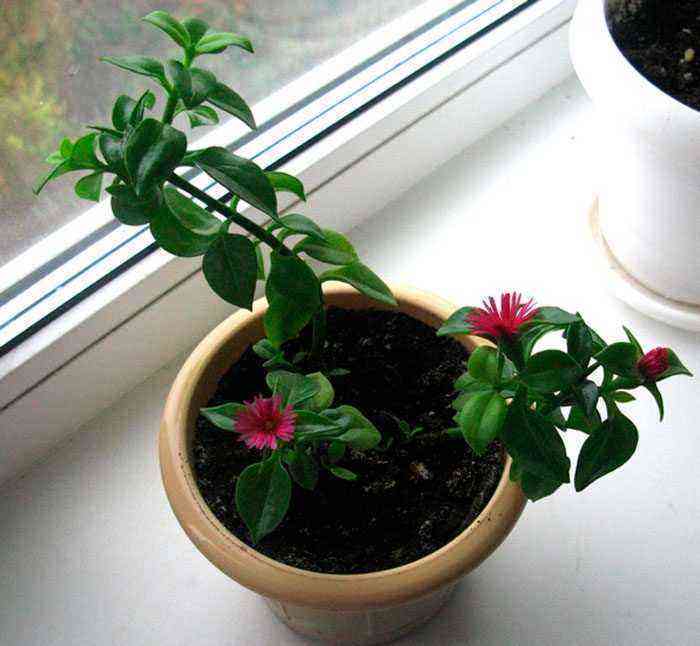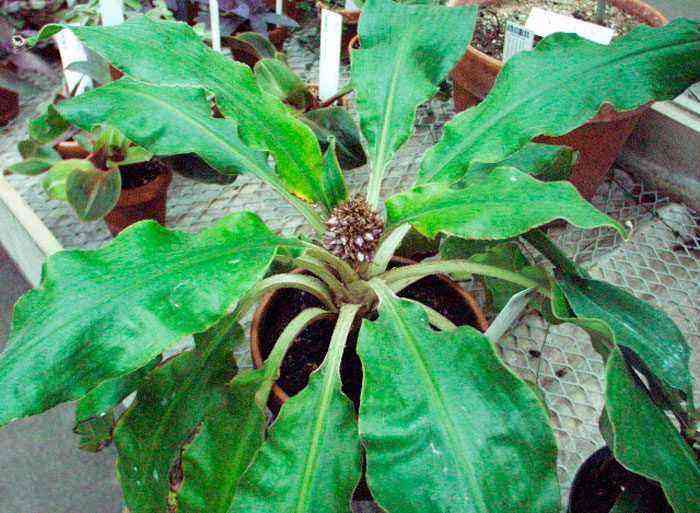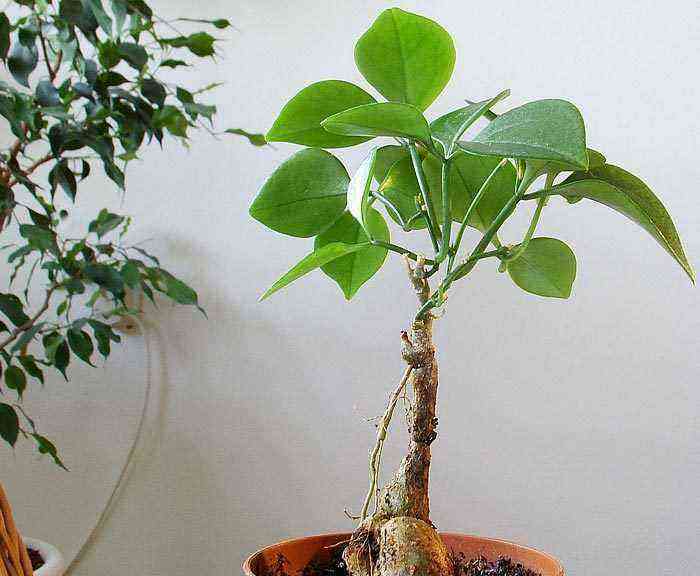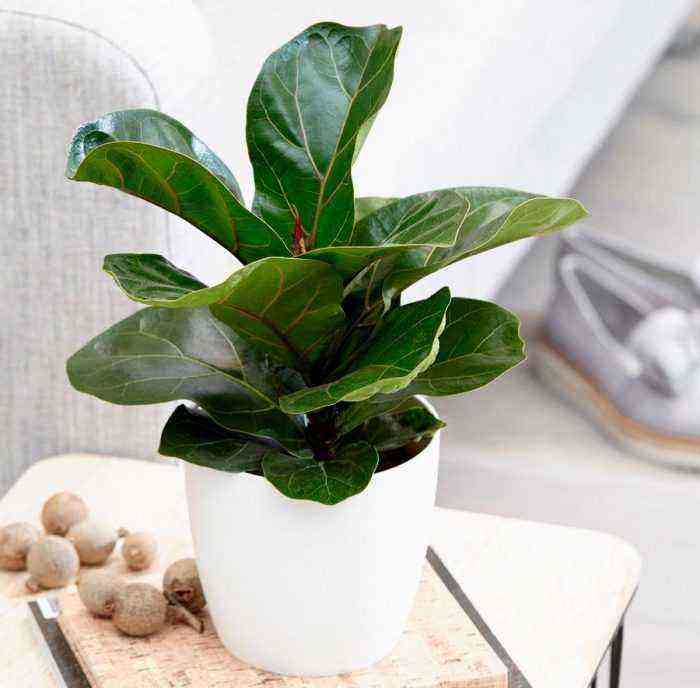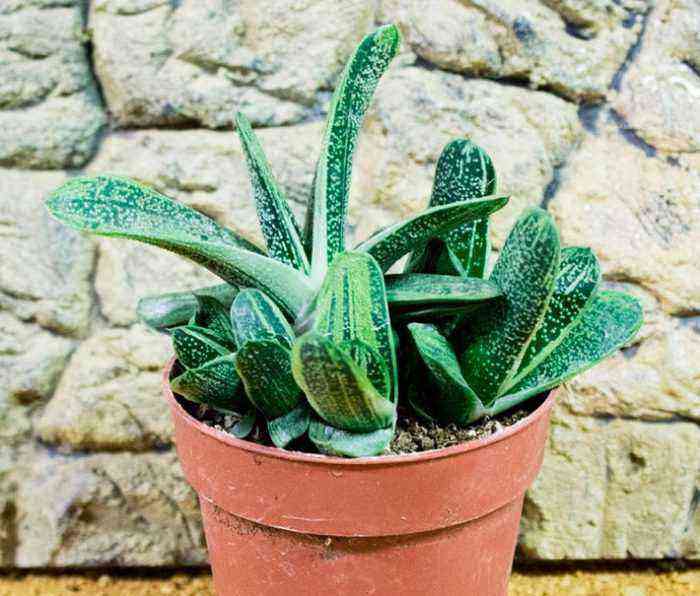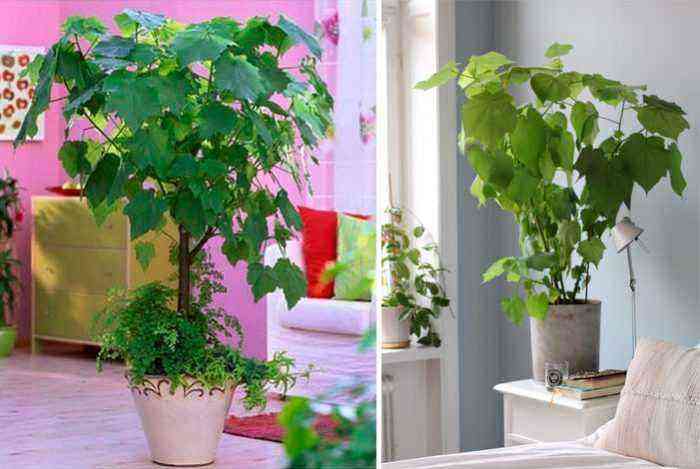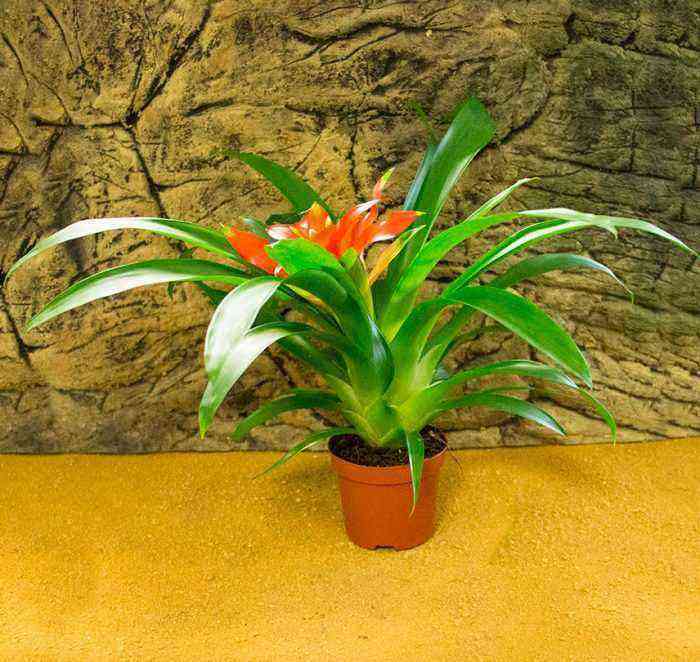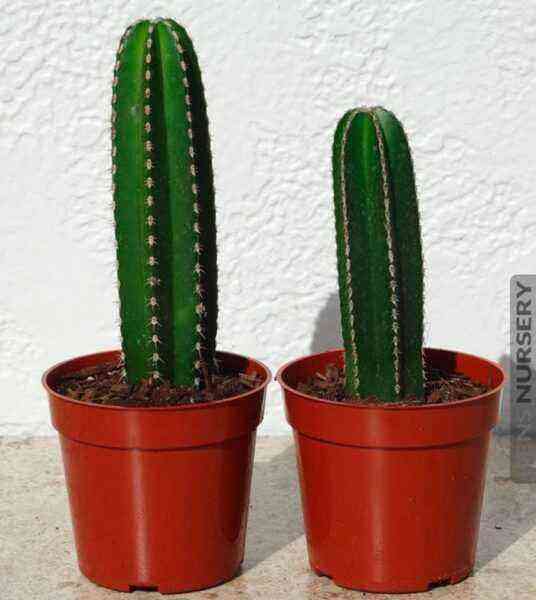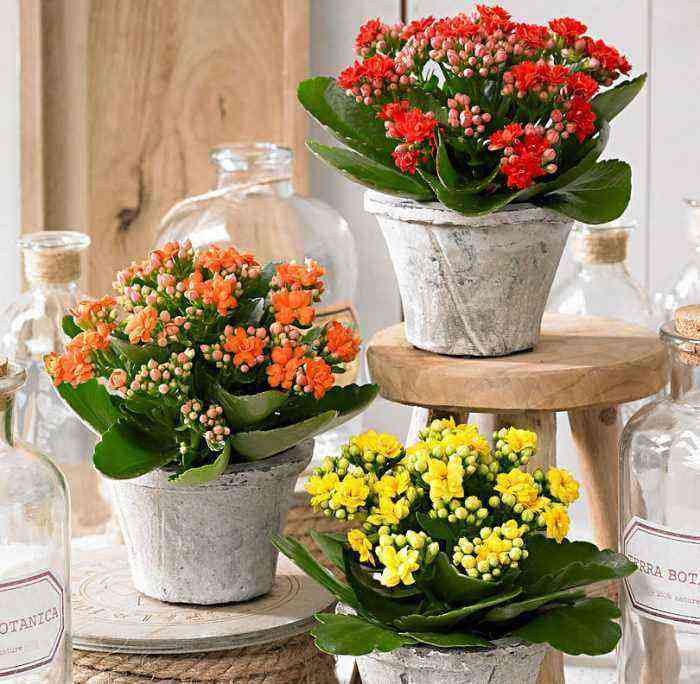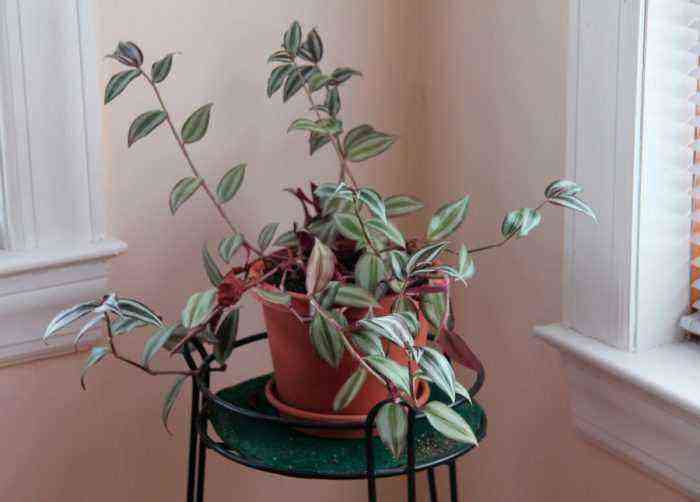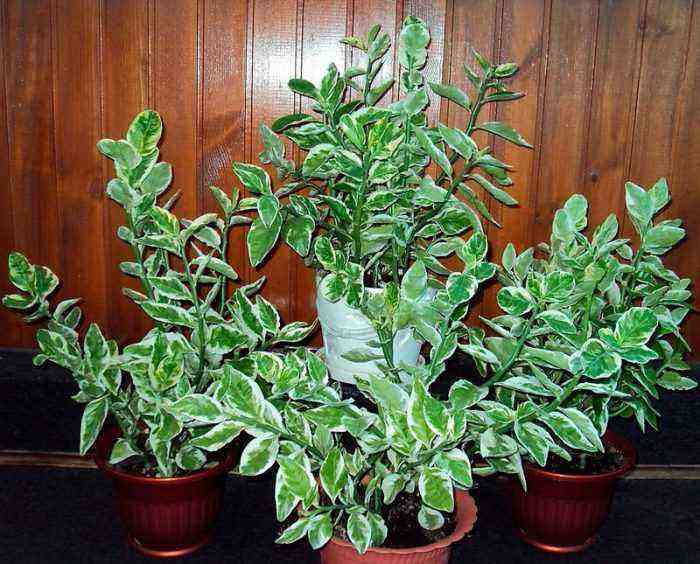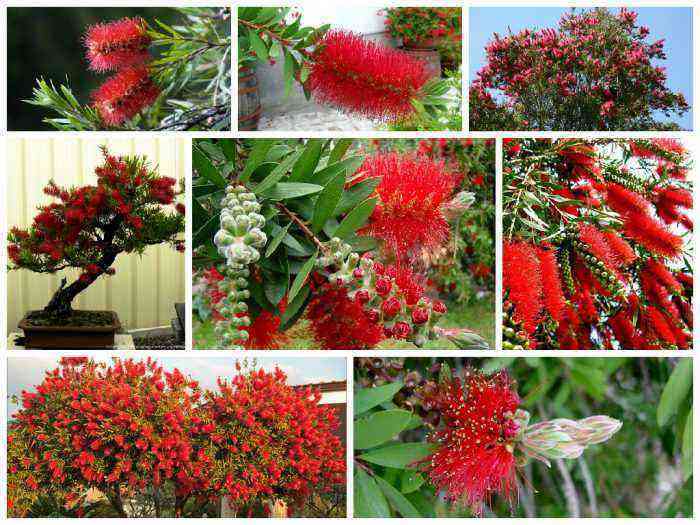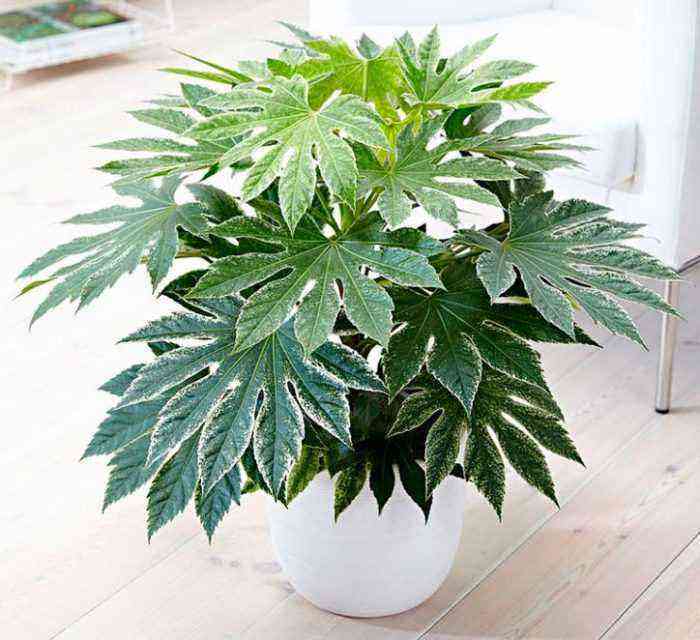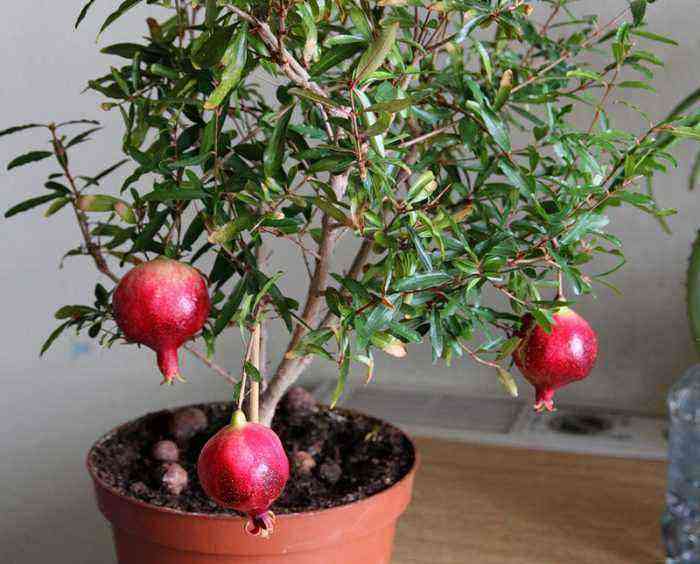The succulent plant Crassula, also called the bastard, is part of the Crassula family. According to information taken from various sources, this genus unites from 300 to 500 different species. More than 200 species are found in South Africa, and a large number of species can be found in Madagascar and tropical Africa. Some of the species can be found in the southern part of the Arabian Peninsula; such a plant is widespread mainly in the Southern Hemisphere. Its name is derived from the word “crassus”, which translates as “thick”, this is due to the fact that most types of foliage has a fleshy structure. At home, the most often grown species of Crassula purslane, it is also called the “tree of happiness” or “money tree”. However, many other types of Crassula are grown in indoor conditions.
Brief description of cultivation
- Flowering… Crassula is grown as an ornamental deciduous plant.
- Illumination… It grows well in bright light of the sun, and also in bright, but diffused light, as well as in shade. For this, windows with an east, south and southwest orientation are suitable.
- Temperature conditions… In the summer – the usual room temperature, and in the winter – from 10 to 15 degrees.
- Watering… Immediately after the surface of the soil mixture in the pot dries out to a depth of 20 to 30 mm.
- Air humidity… Anyone will do.
- Fertilizer… During intensive growth, feeding is carried out once every 1 weeks, for this, a fertilizer solution for succulents and cacti is used. In the autumn-winter period, the plant is not fed.
- The rest period… It is not pronounced. However, it will be better if such a succulent plant rests in winter.
- Transfer… About once every couple of years. The transplant is carried out in the spring at the beginning of the intensive growth of the bush.
- Reproduction… Seed (generative) method and cuttings.
- Harmful insects… Mealy and root bugs, scale insects, spider mites.
- disease… Gray rot, root rot, stem base rot, late blight.
- <font><font>Materials</font></font>… This succulent is capable of releasing substances into the air that have antiviral, antifungal and antibacterial effects. In alternative medicine, its juice is used externally in the same cases as aloe juice, while their effectiveness is also the same. But it should be borne in mind that it is forbidden to take this juice inside, since it contains arsenic.
Features of Crassula
In culture, as well as in natural conditions, you can meet crassula represented by herbaceous and aquatic plants, tree-like shrubs, there are both very small succulents and large ones, but they have one common feature: on the shoot, their leaf plates are placed opposite each other crosswise … Such a succulent plant, when grown in indoor conditions, has a smaller size compared to those specimens that grow in nature, the fact is that such a crassula is limited by the volume of soil mixture, space and other conditions that are needed for active growth. However, over time, such a flower still becomes a tree with a thick stem. The leaf plates are entire and simple, in some species they are ciliate. Lateral or terminal inflorescences can be racemose or umbellate-paniculate, they include flowers of yellow, red, white or pale blue color. But it should be borne in mind that in indoor conditions the fat woman almost never blooms. This culture is very popular among flower growers due to the fact that it is unpretentious, hardy and very easy to care for.
Crassula care at home
It is very simple to grow a fat woman in room conditions, for this you do not need to water it very often, regularly wash the leaf plates and feed it in a timely manner.
Illumination
Most of the species of Crassula cannot be harmed by the direct rays of the sun, so a container with a flower can be placed on a windowsill with a southern orientation. However, it is best for such a crop to grow in the east or southwest window. If the bush feels a lack of light, then this will have an extremely negative effect on its decorative effect, namely: the foliage will fly around, and the shoots will become elongated. In the summer, it is recommended to move the fat woman to the street, where she will feel great.
Temperature conditions
The fat woman is distinguished by its warmth, in connection with this summer, on hot days, she feels good. And in winter, it can grow quite normally next to heating appliances. However, in winter, such a culture feels quite comfortable in the cool (from 10 to 15 degrees). Indoor humidity can be high or low, the bush will grow equally well.
How to water properly
In summer, watering Crassula should be carried out immediately after the top layer of the soil mixture has dried. In winter, you need to wait until the substrate dries to a depth of 20 to 30 mm. Such a plant is not so afraid of the drying out of the substrate as the stagnation of water in it. In this regard, it will be able to calmly stand for 20-30 days while you are away or on summer vacation.
Additional fertilizing
The bush is fed in spring and summer once every 1 weeks, for this they use a fertilizer solution for cacti or succulent plants. In the autumn-winter period, all feeding is stopped.
Formation of a fat woman
It is necessary to start forming a tree when the bush is still relatively young. The fact is that if you form an already adult plant, then in those places where the stems were truncated or the leaf plates were cut off, hemp will remain, which will have an extremely negative effect on the decorative effect of the bush.
First you need to choose the right container for planting. If the pot is too large, then the root of the bush will tend deeper, and it will begin to actively grow upward, because of which the trunk will become elongated, thin and weakened. Therefore, it is recommended to use a sufficiently small and low pot for planting. It is important to prepare the correct soil mixture, which should consist of leaf, humus and sod soil, as well as brick chips (fine gravel) and sand (1: 1: 3: 1: 1). After the height of the bush is 15 centimeters, it is necessary to pinch off 2 of the smallest leaf plates located at the very top, in this place it will begin to branch, namely, instead of one pair of leaves, two will grow. From a growing bush, it is necessary to systematically tear off the top leaves in those places where you want the stems to branch. Thus, you will be able to give the growing tree the necessary shape.
Crassula transplant
Transplanting should be carried out as needed after the root system becomes very crowded in the pot. It is not necessary to transplant the fat woman every year, however, in order for it to bloom, the transplant must be carried out 1 time in a couple of years. This procedure is recommended to be carried out in spring at the beginning of intensive growth.
The new pot should be only slightly larger than the old one; at its bottom it is necessary to make a sufficiently thick layer of drainage, for this you can use chipped shards or expanded clay. Then the flower is transplanted into a new container by transshipment, while it is taken together with an earthen lump, then all the voids are filled with fresh soil mixture. In the event that the root system of the bush has grown greatly in length, then it must be shortened during transplantation so that it can fit in a new container. If you want the bush to have a compact size, you should try not to transplant it at all, while the top layer of the soil mixture needs to be changed once a year.
Crassula properties
The fat woman is able to maintain the health of everyone who lives in the house where she grows up. Such a flower is capable of releasing substances into the air that have a powerful antiviral, antibacterial and antifungal effect. In addition, foliage juice is widely used in alternative medicine for lotions in the treatment of wasp and bee stings, bruises, herpes, abscesses and cuts. It is also used for rinsing in the treatment of gum disease and tonsillitis. Also for arthritis, the juice is used for rubbing at night. But keep in mind that such juice cannot be taken internally, since it contains arsenic in a high concentration. It has long been believed that the fat woman brings prosperity to the house and good luck in business. And thanks to its unpretentious care, it is often found not only in apartments, but also in shopping centers and also in offices.
Methods of reproduction
Crassula propagation by seeds
Sowing Crassula seeds must be carried out in wide bowls, which are filled with a substrate consisting of sand and leafy soil (1: 2). The container is covered with glass on top, while every day it is necessary to remove condensate from it, and do not forget to ventilate the crops regularly. The first seedlings should appear after 15 days. After the seedlings grow a little, they should be cut into a large container, keeping a distance of 10 mm between the bushes, while it must be filled with a substrate consisting of light turf and leafy soil and sand (1: 2: 1). After the pick, the container with the plants is placed in a well-lit place, while the light should be bright and diffused. After the bushes grow up and get stronger, they should be cut into individual pots, which reach 50–70 mm in diameter, and they should be filled with a substrate, which includes sod and leafy soil, as well as sand (1: 1: 1) … Until they take root, they should be kept at a temperature of 16 to 18 degrees, and then they are put in a permanent place.
Crassula propagation by cuttings
Propagating Crassula by cuttings is much easier and faster than by seeds. As cuttings, you can use leaf plates, as well as stem segments. A large leaf plate or a large shoot must be cut off with a very sharp knife, while the cuts should be sprinkled with chopped charcoal. They must be dried for 2-3 days, and then planted in a substrate consisting of leafy earth and sand for rooting. They can also be placed in water mixed with charcoal for rooting. After the cuttings grow roots, they should be planted in individual pots, reaching 50–70 mm in diameter. To fill them, a substrate is used, consisting of sod and leafy soil, and also sand (1: 1: 1). Then the bushes are removed to a permanent place, while caring for them is the same as for adult plants.
Crassula pests and diseases
The greatest danger to the crassula is the stagnation of liquid in the substrate, since this may cause rot on the root system and base of the trunk. The fact is that this culture is one of those plants that overdrying an earthen coma can harm less than frequent watering. Drafts are also very harmful to such a flower, if it catches a cold, then it will begin to dry out and fly around the foliage.
Mealybugs can settle on such a plant, in order to remove them from the foliage, use cotton wool, which is moistened with alcohol. In some cases, scale insects settle on it, in order to get rid of them, the bush must be sprayed with actellik. In the event that the bush is not watered for a long time, then spider mites can occupy it, you can find out about this by the thin cobweb that forms on the leaf plates. To combat them, you can use fitoverm or actellic.
Types of Crassula with photos and names
As mentioned above, there are a very large number of Crassula species. Below will be given a description of those species that are most popular with florists. Representatives of tree-like fat women, called “money trees”:
Crassula oval (Crassula ovata), or ovoid
This type is most popular with flower growers. His homeland is the southwestern part of Africa. In nature, the height of the bush can reach 300 cm, and when grown at home, it does not exceed 150 cm.Oval glossy leaf plates are painted green or gray-silver. Such a plant is fast growing and has a large number of shoots. The apical umbrellas consist of small flowers of pink or white color. This species is distinguished by the greatest shade-lovingness from all others, which is very important when cultivating at home. Breeders use this species as the main one for breeding a large number of varieties, which are very simple and easy to grow even for novice growers. For example:
- Crassula Minor – it is a compact form of ovoid crassula, especially the Crosbis compact variety stands out, its pale red leaf plates reach 15 mm in length and up to 10 mm in width, this variety is good for mini-gardens;
- Crassula The Hobbit and Crassula Gollum – these 2 American hybrids of crassula milk and crassula ovoid are very similar to each other, they have an unusual, as if turned outward, shape of leaf plates, which have grown together from the base to the middle – in the Hobbit, and with leaves rolled up into tubes expanding funnel-shaped towards the tips in Gollum;
- Crassula Sunset – this tricolor cultivar has foliage, the surface of which is decorated with stripes of yellow or white, and it also has a red edging.
Crassula arborescens
This type is similar to the ovate Crassula. Its trunk and branches are naked, the shape of flat fleshy leaf plates is round-obovate, they have a grayish color with a pale blue tint and red edging along the edge, their length can vary from 35 to 70 mm. Panicle inflorescences consist of white or pinkish flowers, however, when grown indoors, flowering in such a plant is very rare. In order for such a species to grow and develop well, it needs bright sunlight, while it does not like the shadow. The following varieties are cultivated by flower growers:
- crassula undulatifolia – flat narrow foliage of a bluish-silver color has red tips, there is also a variegated form;
- Crassula curly – with wavy large sheet plates.
Crassula portulacea, or silvery
Outwardly, this species is very similar to the tree-like and oval crassula, but it is more compact in size.
The most popular among florists are such creeping crassulas as:
Crassula lycopodioides, or mossy (Crassula muscosa)
This shrub plant is compact, it reaches a height of no more than 25 centimeters. The creeping fleshy stems have a tetrahedral shape and curled tops. By the location and structure of the leaf plates, this species is very similar to the lyre. It is undemanding and grows well in shade, and in bright sunlight, its foliage turns slightly reddish.
Crassula pseudolycopodioides
The stems of this species are more curved, and they are not very strongly pressed against the shoots. There are forms, the foliage of which has a silvery, yellow or variegated color.
Crassula lactea, or milky (Crassula lactea)
This large ampelous plant has stems about 0,3 m long. Rounded greenish-gray leaf plates, pointed to the tips, have a length of 30–40 mm and a width of 20–30 mm.
Crassula point (Crassula picturata)
This type is highly decorative. On the lying branching stems, there are leaves with an unusual color: on the green surface there are many red dots, on the underside of the plate they look purple. On the edge of the foliage there are transparent cilia.
In addition to these creeping species, flower growers also grow Cooper’s Crassula and tetrahedral.
In culture, the most popular are columnar crassulas such as:
Crassula perforata, or perforated (Crassula perforata)
A small bush adorns the diamond-shaped foliage, which covers the shoot as if it were strung on it. The color of the foliage is greenish with a bloom of bluish color, and along the edge there is a cartilaginous red border.
Crassula buddha
This hybrid of Crassula perfoliate and Crassula pyramidal is more correctly called Crassula “Buddha’s Temple”. Such a bush is externally similar to the columns, which consist of tightly pressed leaf plates of a triangular shape and dark green color strung on the shoot. After the height of such a “column” exceeds 15 centimeters, it is capable of collapsing under its own weight on its side. Short apical inflorescences consist of red flowers.
Even in room conditions, such species are cultivated as: crassula marginal (or edged), spatulate, rocky, rounded, scion, rosette, sickle-shaped, grouped, pierced-leaved, woolly, Schmidt, etc. In specialized stores, in some cases, you can find a plant called “Crassula mix”. In this case, it must be borne in mind that this is not the name of the form or variety, but simply the marking of the batch of Crassula, which means that it consisted of various species and varieties.

